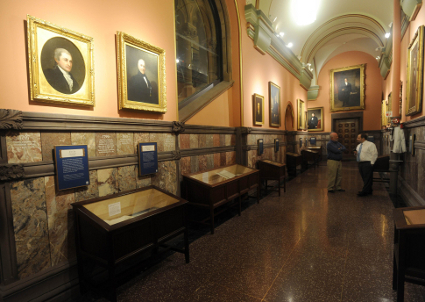TRAVEL: New York raids its attic and finds US history

New York’s Capitol has been the workplace of future presidents, Supreme Court justices, premier thinkers and even scoundrels. Now the statehouse is telling some of its long-hidden tales by filling its hallways with artifacts that are drawing thousands of visitors.
The newly displayed pieces of Americana include a 1762 slave bill of sale, early abolitionist decrees, Gov. Nelson Rockefeller’s massively stretched Lincoln Continental from the “Mad Men” era, and a curious chunk of old iron: a 3-foot link from Gen. George Washington’s defense system, which strung a quarter-mile chain across the Hudson River at West Point to stop British ships during the Revolutionary War.
In less than a year, marble halls that for most of their 130 years had been used simply as routes between offices have been transformed into a museum. Every few steps, slices of American and state history give even veterans of these hallways pause.